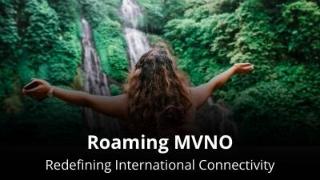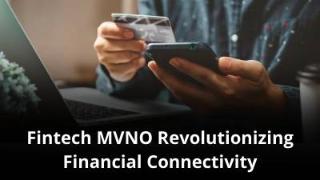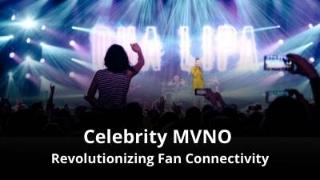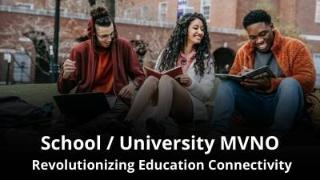Introduction about starting a School / University MVNO (Mobile Brands)
The concept of an Education-focused Mobile Virtual Network Operator (MVNO) represents a unique approach to bridge the digital divide in educational institutions. This innovative business model, driven by a mission to enhance educational equity, empowers students and faculty through affordable mobile services. By leveraging mobile technology and strategic partnerships, this MVNO seeks to address educational challenges and improve access to learning resources for all.
What do you need to know about starting a School / University MVNO/IOT
- What are the advantages and disadvantages ?
- What are the Revenue sources and Pricing strategy?
- What are suitable segments?
- What kind of Mobile bundles are typically used?
- What kind of ARPU can you expect?
- What is the Go-to-Market Strategy?
- What are some points to think of for the Marketing Plan?
- What kind of financing is to be expected?
- What kind of MVNO type is typically used?
- What is the expected time for the launch?
- What is the expected impact of 5G?
- What is the expected impact of eSIM?
- IOT and its Relation to School MVNOs
- Benefits of Launching School/University MVNO/IOT
- Frequently Asked Questions
- Summary
What are the advantages and disadvantages of a School / University MVNO/IOT?
Advantages: Launching an Education-focused MVNO offers a profound opportunity to bridge the digital divide within schools and universities. By providing affordable mobile data plans to students and faculty, this model can significantly enhance internet access and promote equitable learning opportunities. Affordability allows participation in online resources, fostering a more connected and tech-enabled learning environment. Additionally, the social mission behind such an MVNO resonates with stakeholders and supporters, attracting funding and partnerships aligned with the goal of improving educational access.
Disadvantages: However, establishing and sustaining an Education-focused MVNO presents notable challenges. Securing consistent funding for operations and expansion can be a primary hurdle, as this model may rely on grants, donations, or subsidies alongside potential partnerships with educational institutions. Moreover, navigating regulatory complexities in the telecommunications sector requires expertise and resources, potentially hindering the scalability and long-term viability of the venture.
What are the Revenue sources and Pricing strategy?
Revenue Sources: Revenue generation for an Education-focused MVNO may come from a blend of sources. This model could potentially seek funding from grants, donations, or subsidies focused on educational technology initiatives. Additionally, strategic partnerships with educational institutions could involve bulk discounts or revenue sharing on student and faculty subscriptions. The MVNO might also explore sponsorships or partnerships with educational technology companies.
Pricing Strategy: The pricing strategy of an Education-focused MVNO emphasizes accessibility and affordability for students and faculty. Plans are designed to meet essential mobile data needs at reduced costs, ensuring that the service remains inclusive and beneficial for all members of the educational community. Transparent pricing structures and straightforward plans would enable affordability, aligning with the MVNO’s social impact objectives.
What are suitable segments for School / University MVNO/IOT?
- Public schools & students: Public Elementary & Secondary Schools. Affordable data, parental controls, educational content partnerships.
- Private schools: Private Elementary & Secondary Schools. Affordable data, secure communication tools, enhanced learning resources
- Universities & students: Universities & Colleges, Scalable data plans, international calling options, research support
- Online Learners: Reliable data plans optimized for online learning platforms
- Underserved students / Non-Profit Education: Heavily subsidized data plans for digital literacy development
- Students & Coaches; Extracurricular Activities, Affordable data plans with communication tools for extracurricular activities.
- School districts: Eg. School Bus Transportation. Dedicated data plans for school buses enabling real-time tracking and emergency communication
- International Students: Affordable data plans with international calling and flexible roaming options.
- Parents & guardians: Parent-Teacher Association (PTA) Focus. Affordable data plans facilitating communication with schools and educators.
- Educators: Educational Resource Provider Focus. Data plans optimized for accessing educational resources like online libraries and learning management systems

What kind of Mobile bundles are typically used for a School / University MVNO?
Data: High-speed data for live streaming school classes, accessing education apps, and e-learning.
Voice: Reliable voice calls for discussing lessons, educations, student-teacher calls.
SMS: Instant alerts for results, class changes, emergency alerts, raster updates, exams.
What kind of ARPU can you expect?
ARPU: Moderate
Why: The School/University MVNOs typically achieve a moderate Average Revenue Per User (ARPU) due to the value-added educational services they offer. Students, faculty, and educational staff often require specialized plans with access to academic resources, collaborative tools, and campus-specific features, leading to a higher ARPU compared to standard consumer-focused MVNOs.
Where It Is Based On: ARPU for School/University MVNOs is based on premium educational services, including access to academic resources, specialized learning tools, and campus-specific features tailored to the unique needs of students and educational professionals.
You need to work out the details in your Financial Plan.

What is the Go-to-Market Strategy for a School / University MVNO?

Launching a School/University MVNO demands a strategic approach tailored to educational communities. Establishing partnerships with schools, universities, and educational influencers is essential for building credibility and engaging the target audience effectively. Collaborations with educational suppliers and bookstores can lead to co-branded offerings that appeal to students, faculty, and staff.
Engaging in grassroots marketing initiatives, such as sponsoring academic events, seminars, and student workshops, establishes a strong presence within the educational community. Leveraging social media platforms and academic forums for direct interaction with potential subscribers can generate excitement around the launch and increase interest.
- Target Audience: Students, faculty, staff, academic researchers, and educational administrators.
- Pricing Strategy: Competitive rates for education-focused plans, offering various packages tailored to different user profiles within schools and universities.
- Distribution Channels: Partnering with school bookstores, educational institutions, online educational platforms, and academic conferences for distribution.
- Promotion: Exclusive access to educational resources, academic webinars, collaborative study tools, and campus event promotions.
- Customer Support: Dedicated 24/7 support tailored to academic needs, multilingual support teams, and personalized educational assistance for subscribers.
What are points to think of for the Marketing Plan?
To effectively market your Schools & Universities Mobile Virtual Network Operator (MVNO), focus on delivering specialized mobile services tailored to educational needs and fostering collaboration within the academic community. Implement the following strategies to establish your MVNO as a trusted provider for educational institutions. You need to work out below points in your Marketing Plan.
USP: Highlight tailored mobile services designed exclusively for schools and universities, emphasizing secure and controlled mobile environments for learning & communication.
Content Creation: Produce educational content such as tutorials, virtual lectures, and academic updates to enrich the digital learning experience for students and faculty.
Promotions: Offer discounted plans for educational institutions, providing cost-effective mobile solutions for faculty, staff, & students. Implement promotional campaigns during back-to-school seasons & academic events.
Partnerships: Collaborate with schools, colleges, and universities to develop co-branded mobile plans and educational content. Partner with educational associations for wider reach and credibility.
Feedback Loop: Establish a feedback mechanism to gather insights from educational institutions on mobile service needs and user experiences. Use this feedback to continuously enhance and customize offerings.

What kind of financing is to be expected for School / University MVNOs?

Financing: Moderate
The financing requirements for an Education-focused MVNO typically fall into a moderate range. Funding is needed for outreach initiatives within educational institutions, partnerships with key stakeholders, and development of tailored mobile data plans for students and faculty. Investments may be directed towards marketing campaigns, content creation, and technology infrastructure to support the MVNO’s mission-driven approach.
You need to work the details in your Financial Plan.
What kind of MVNO type is typically used for School / University MVNOs?
MVNO Type: Light MVNO
This choice of MVNO type provides School/University MVNOs with the necessary level of control over their network infrastructure and service offerings, allowing them to tailor mobile services specifically to the needs of students, faculty, & staff within the educational institution.
See also: Different types of MVNOs
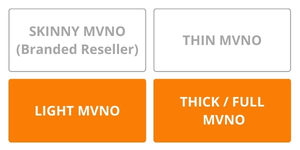
What is the expected time to launch for School / University MVNOs?
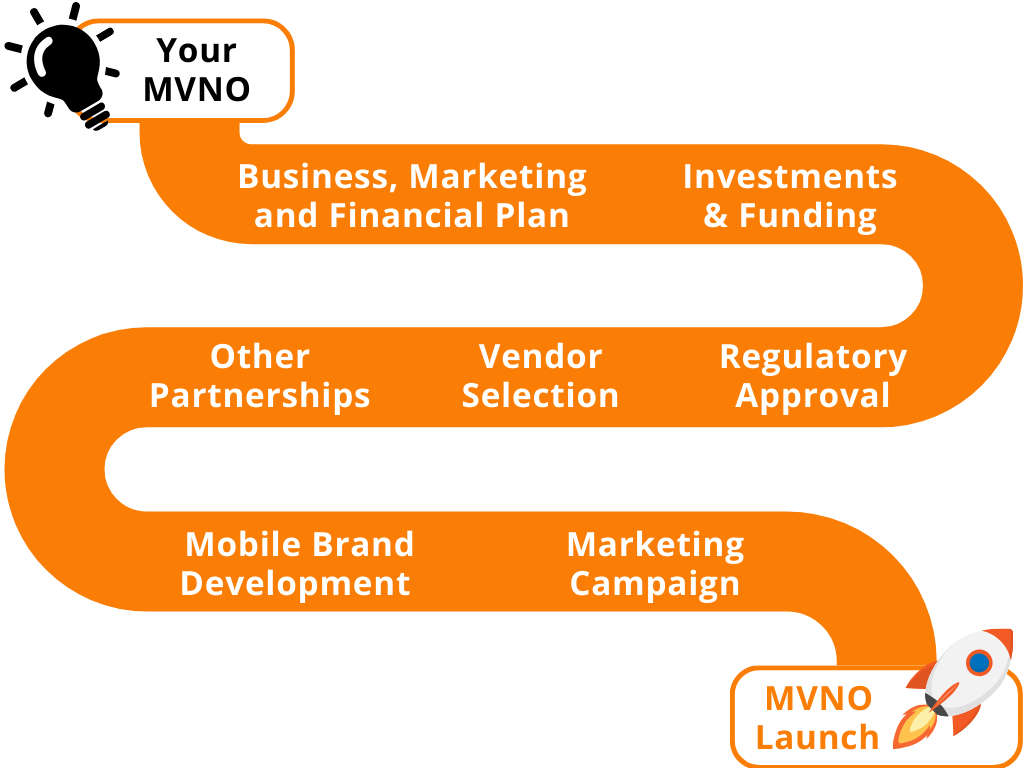
Expected Time to Launch: 9-12 months
Establishing robust partnerships with educational institutions, developing a tailored mobile platform, and curating relevant content require meticulous planning and execution. Leveraging innovative technologies such as AI-driven engagement tools and user-friendly mobile interfaces can accelerate the launch process, facilitating seamless connectivity for students and faculty.
To expedite the launch, consider pre-negotiating partnerships with schools and educational influencers, enabling a swift transition to operational readiness. Implement agile development methodologies, utilize cloud technologies for scalability, and automate key processes like student onboarding and billing for operational efficiency. Prioritize the development of a Minimum Viable Product (MVP) with essential features to ensure a swift market entry while remaining responsive to educational needs. Collaborate with experienced telecom professionals and technology partners to streamline deployment and deliver a compelling mobile experience to the academic community.
What is the expected impact of 5G for School / University MVNOs?
5G technology can significantly enhance the reach and quality of mobile services within educational institutions. Improved internet speeds and reduced latency can facilitate seamless access to online resources, virtual classrooms, and collaborative tools, enhancing the overall learning experience for students and faculty. Additionally, 5G opens up possibilities for new applications in augmented reality (AR) and virtual reality (VR), enabling innovative teaching methods and research opportunities. For more details see the Mobile Network section.

What is the expected impact of eSIM for School / University MVNOs?

eSIM technology offers simplified device activation and management, providing flexibility and convenience for students and faculty. With eSIMs, users can easily switch between different networks without physical SIM cards, making it easier to connect personal devices to the MVNO’s network. This streamlined onboarding process can enhance user experience, particularly for individuals using multiple devices or transitioning between school and home environments. For more details see the SIM section.
IOT and its Relation to School MVNOs
School MVNOs, focused on providing connectivity and digital resources to students and educational institutions, can leverage IoT to create safer, more efficient, and more engaging learning environments. While the original text focused on entertainment and fan engagement, School MVNOs can utilize IoT for entirely different, education-focused purposes. Here’s how:
Wearable Technology and Student Safety/Well-being: Instead of tracking fan activity, wearable technology can be used to enhance student safety and well-being. GPS trackers can be used to monitor student location during field trips or after-school activities. Wearable sensors can monitor student health metrics during physical education classes or identify potential health issues. With appropriate privacy safeguards and parental consent, this data can be used to improve student safety and provide timely interventions.
Smart Campuses and Enhanced Learning Environments: Instead of focusing on entertainment venues, IoT sensors can be deployed throughout school campuses to monitor various aspects of the learning environment. Sensors can monitor classroom temperature, lighting, and air quality, creating more comfortable and conducive learning spaces. Sensors can also be used to track building occupancy, optimize energy usage, and improve campus security.
Connected Devices for Interactive Learning and Collaboration: Rather than interactive games related to entertainment, connected devices can be used to facilitate interactive learning experiences and collaboration among students. Tablets, laptops, and interactive whiteboards can be connected to the school network through the MVNO’s service, enabling access to digital learning resources, online collaboration tools, and virtual field trips. Connected lab equipment can transmit real-time data for science experiments, providing students with hands-on learning experiences.
Data Analytics and Personalized Learning: Instead of analyzing fan behavior, School MVNOs can use data analytics to personalize learning experiences and track student progress. Data collected from connected devices and learning platforms can provide insights into student learning styles, strengths, and weaknesses. This data can be used to personalize learning content, provide targeted interventions, and track the effectiveness of educational programs.
Transportation Tracking and Optimization: For schools providing bus services, IoT can improve safety and efficiency. GPS trackers on school buses can provide real-time location information to parents and school administrators, improving communication and reducing anxiety about bus delays. Data on bus routes and ridership can be used to optimize bus schedules and reduce transportation costs.
Security and Access Control: IoT-enabled security systems, such as smart locks, access control systems, and security cameras, can enhance campus security and protect school assets. These systems can be integrated with the MVNO’s network, providing real-time monitoring and alerts.
By integrating IoT data and services into their offerings, School MVNOs can create safer, more efficient, and more engaging learning environments for students and educators. They can differentiate themselves by demonstrating a clear commitment to educational excellence and leveraging technology to enhance the learning experience.
Benefits of Launching School/University MVNO/IOT
Enhanced Campus Security: Partner with the school or university to integrate safety features within the MVNO platform. This might involve emergency contact buttons, real-time campus alerts, or location tracking services for students’ peace of mind.
Connected Campus Infrastructure: Connect campus infrastructure such as lighting, HVAC, and security systems to optimize energy consumption and improve safety.
Security and Access Control: IoT-enabled security systems, such as smart locks, access control systems, and security cameras, can enhance campus security and protect school assets. These systems can be integrated with the MVNO’s network, providing real-time monitoring and alerts.
Data Analytics and Personalized Learning: Instead of analyzing fan behavior, School MVNOs can use data analytics to personalize learning experiences and track student progress. Data collected from connected devices and learning platforms can provide insights into student learning styles, strengths, and weaknesses. This data can be used to personalize learning content, provide targeted interventions, and track the effectiveness of educational programs.
Streamlined Communication with Parents: Provide a dedicated channel for parents to communicate with their children attending the school. This could involve a secure messaging platform or a mobile app with features like school announcements, cafeteria menus, or access to progress reports.
Boost School Spirit and Engagement: Develop a branded MVNO experience that fosters school spirit and a sense of community among students. This could involve offering co-branded merchandise, exclusive discounts at local businesses, or gamified features within the MVNO app that encourage participation in school events.
Frequently Asked Questions
What is a School or University MVNO?
A School or University MVNO is a mobile virtual network operator created by an educational institution to provide tailored mobile connectivity solutions for students, faculty, and staff. It can offer customised plans, campus-centric services, and digital tools that support learning, communication, and community engagement.
Why would a school or university start its own MVNO?
Educational institutions launch MVNOs to enhance student experience, improve on-campus connectivity, offer affordable data plans, support digital learning platforms, and provide brand-aligned communication services that integrate seamlessly with institutional systems and support services.
What steps are involved in launching a School/University MVNO?
Key steps include defining objectives, selecting a target audience, choosing the right business model, securing regulatory and legal approval, negotiating wholesale network and technology partnerships, designing customised plans, and building operational systems for billing, support, and provisioning.
How can a School MVNO support educational goals?
A School MVNO can support learning by enabling students and faculty to access educational content, campus services, digital libraries, and collaboration tools without additional data costs. It can also integrate with student portals, campus apps, and administrative systems for streamlined communication.
What partnerships are needed to launch a School or University MVNO?
Critical partnerships include wholesale connectivity agreements with mobile network operators, technology partners for OSS/BSS, SIM/eSIM provisioning, customer support solutions, and regulatory/legal advisors. Strategic campus and community partnerships can also support user adoption and service design.
What challenges do School/University MVNOs face?
Challenges include managing regulatory compliance, securing cost-effective wholesale terms, balancing institutional priorities with operational needs, ensuring quality of service campus-wide, and achieving sustainable adoption and engagement among students and staff.
Summary
In summary, an Education-focused MVNO presents a unique opportunity to address the digital divide within schools and universities. By offering affordable mobile data plans tailored to various educational segments, this model empowers students and faculty with essential connectivity tools to enhance the learning experience. While challenges exist, the potential for educational equity and improved learning outcomes is substantial, driven by sustainable funding, targeted outreach, and a mission-driven approach to bridging the digital gap in education. This business model requires a strategic blend of financial sustainability and social responsibility to achieve lasting positive change within educational institutions.
